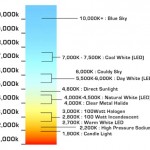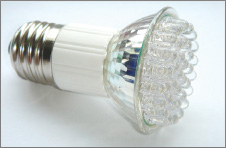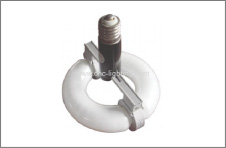Modern energy efficient lighting technology is rapidly evolving and is creating opportunities for U.S. businesses and consumers alike to save money and the environment.
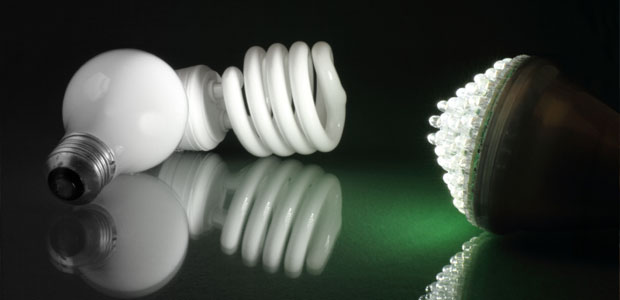
Lighting represents about 20% of all electricity use in the United States with the cost to businesses and consumers topping $50 billion a year, according to the Department of Energy (DOE).
That’s the same dollar amount the federal agency estimates is being wasted annually by the owners of 2.8 million U.S. commercial, industrial and institutional buildings that rely on outdated lighting systems.
A company maintaining a standard 50,000-square-foot commercial building can spend up to $45,000 annually on energy for lighting alone, according to a report prepared for the National Electrical Manufacturers Association (NEMA), which represents 95 percent of the U.S. lighting manufacturing industry.
Over three quarters of the nation’s five million commercial, industrial, and institutional buildings were built prior to the debut of many cost-cutting, energy efficient lighting technologies on the market today, the DOE said.
Now, demand for efficient lighting solutions is spurring the growth of new options in energy- efficient lighting technologies, which can reduce energy use by up to 75%.
Despite the initial higher cost of some modern lighting technologies, energy-efficient lighting last longer than traditional lighting, making them less expensive over their lifetime.
Returns on energy-efficient lighting technologies range from 30-50 percent, according to the NEMA report.
According to the DOE, a typical incandescent bulb, which wastes 90% of its energy as heat, lasts from 750-2,000 hours, while a comparable compact fluorescent lamp (CFL) lasts up to 10,000 hours. (source: http://www.energysavers.gov/your_home/lighting_daylighting/index.cfm?mytopic=12030#led) LEDs (light emitting diodes) can last from 35,000 to 50,000 hours or more, the agency said.
Meanwhile, new light bulb efficiency standards effective Jan. 1 will require incandescent light bulbs to be 28% more efficient, which effectively phases out 100-watt bulbs.
Lighting manufacturers have spent millions to comply with the new standards by transitioning to energy efficient lighting, now mandated by the Energy Independence and Security Act of 2007.
Packages of most light bulbs sold in stores in 2012 will carry a new Lighting Facts label – modeled after the “Nutrition Facts” labels on food packages – to help consumers compare the brightness and estimated energy costs of various types of light bulbs.
The new label will give consumers information about brightness, known as lumens, energy cost, lifetime, light appearance (“warm” or “cool” light), wattage, and whether the bulb contains mercury.
However, Congress voted in December of 2011 to withhold funding for enforcement of the new regulations for nine months.
NEMA said the Congressional action “undermines those investments and creates regulatory uncertainty … and creates consumer confusion resulting from a patchwork of state enforcement.”
Nevertheless, upgrading to energy efficient lighting can help companies achieve the sustainability concept of the triple bottom line in the form of lower energy costs, reduced environmental impact, and improved employee well being and productivity.
Given some of the complexities buyers face in making lighting decisions, it’s important to have the basics of some of the most energy efficient lighting technologies explained.
Consider lighting output, not energy consumption
Traditionally, when considering lighting purchases, consumers relied on the number of watts, a measure of how much electrical power the light source consumes. But with today’s modern energy efficient lighting technologies, consumers need to instead consider lumens – a measure of the amount of light produced.
For instance, buyers looking for an energy-efficient alternative to a 100-watt light bulb should consider a 1,600 lumen CFL or LED light; a 75-watt bulb is equivalent to about 1,100 lumens; a 60-watt light bulb is equal to about 800 lumens, according to the DOE.
Why the change? Using watts to describe the brightness of a lamp is akin to using gallons of gasoline to describe how fast a car can go, which wasn’t a problem when marketing incandescent bulbs that used only 10% of their energy to produce light, the rest wasted as heat.
With new energy efficient lighting products – using fewer watts to produce the same amount of brightness – entering the market, however, it makes sense for manufacturers to market these new products based on a value of brightness, or lumens.
Measuring Lighting Quality
A couple of key terms to keep in mind when considering aspects of lighting quality are color appearance and the Color Rendering Index (CRI).
Color appearance measures color of the light source using Kelvin (K) temperature. The lower the Kelvin temperature (2700–3000 K), the warmer the color of the light. The higher the temperature (3600–5500 K), the cooler, and more bluish, the light appears.
CRI is an internationally accepted measure of how well a light source renders colors, compared to incandescent and daylight sources. The CRI scale of 0 and 100, with 100 representing perfect color rendering based on illumination by a 100-watt incandescent light bulb.
Color appearance and CRI values for energy-efficient lighting technologies:
- Incandescent bulbs: 2,700 K, 100 CRI
- Cool white fluorescent tube: 4,100 K, 62 to 80 CRI
- Noon sunlight: 4,500 K to 5,400K, 100 CRI
Energy Efficient Lighting Technologies Compared
Here are the top technologies in energy efficient lighting and how they compare to standard incandescent bulbs:
Fluorescents/Compact Fluorescent Lamps (CFLs)
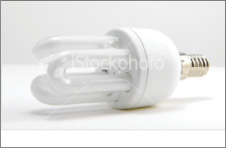
Fluorescent lamps use about 25% of the energy used by incandescent lampsto provide the same amount of illumination. CFLs are short, curly versions of long tube fluorescent lights
- use 75% less energy
- produce 75% less heat
- last 10 times longer than comparable traditional incandescent bulbs
- fluorescent bulbs contain a small amount of mercury. Many retailers recycle CFLs for free.
Halogen Incandescents
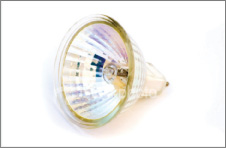
Halogen incandescents are smaller version of incandescent bulbs and highly energy efficient
- use 25% less energy than traditional incandescent bulbs
- lasts up to three times longer than traditional incandescent bulbs
- some models can last up to three times longer than traditional incandescents
Light Emitting Diodes (also referred to as Solid State Lighting)
Light Emitting Diodes (LED): most energy efficient and rapidly-developing lighting technology
- use 80% less energy
- offer better light quality than almost any other type of energy efficient lighting
- last 25 times longer than traditional incandescent bulbs
- last up to ten times longer than CFL lamps
Magnetic Induction Fluorescent
Magnetic induction fluorescent: the energy is transferred through the bulb’s glass by electromagnetic induction
- saves 40% of energy use over traditional fluorescent counterparts
- some models have life expectancy of up to 100,000 hours
- induction lighting also has better color rendition
“Induction lighting is one of the best kept secrets in energy efficient lighting.”
~ Department of Energy
Ceramic Metal Halide (CMH)
Ceramic Metal Halide lamp (CMH) is relatively new energy efficient lighting technology using metallic atoms as the main source of light, creating a bluish light similar to daylight ed in shop lighting, street and architectural lighting
- light created by CMH lamps are bluish with a CRI of up to 96
- use 20% of the power of comparable tungsten incandescent light bulbs
Lighting Type Summary
The following table illustrates the relative differences in color, efficiency, and lifetime of various energy efficient lighting technologies:
| Lighting type | Efficacy (lumens/watts) |
Lifetime (hours) |
Color Rendition Index (CRI) | Color Temperature (K) |
|---|---|---|---|---|
| Standard Incandescent bulb | 10–17 | 750-2,500 | 98-100 (excellent) | 2,700-2,800 (warm) |
| Tungsten halogen | 12-22 | 2,000-4,000 | 98-100 (excellent) | 2,900-3,200 (warm to neutral) |
| Straight tube fluorescent | 30-110 | 7,000-24,000 | 50–90 (fair to good) | 2,700-6,500 (warm to cold) |
| Compact fluorescent lamp (CFL) | 50-70 | 10,000 | 65-88 (good) | 2,700-6,500 (warm to cold) |
| Ceramic metal halide (CMH) | 70-115 | 5,000-20,000 | 70 (fair) | 3,700 (cold) |
| Cool white LEDs (light emitting diodes) | 60-92 | 35,000-50,000 | 70-90 (fair to good) | 5,000 (cold) |
| Warm white LEDs | 27-54 | 35,000-50,000 | 70-90 (fair to good) | 3,300 (neutral) |
Source: Department of Energy

